Nestled in the heart of Hanoi, Ly Quoc Su Street stands as a testimony to the rich historical tapestry of Vietnam. It is a beloved stretch of pavement where tradition meets modernity, and where locals and tourists alike come together to experience the essence of Vietnamese culture. The street is not merely a pathway in the bustling old quarter; it is a vibrant canvas decorated with captivating stories and delectable tastes waiting to be discovered. Walking down Ly Quoc Su Street is akin to flipping through the pages of a living history book it is where the fragrance of aromatic cuisines wafts through the air and where centuries-old architecture whispers tales of the past.
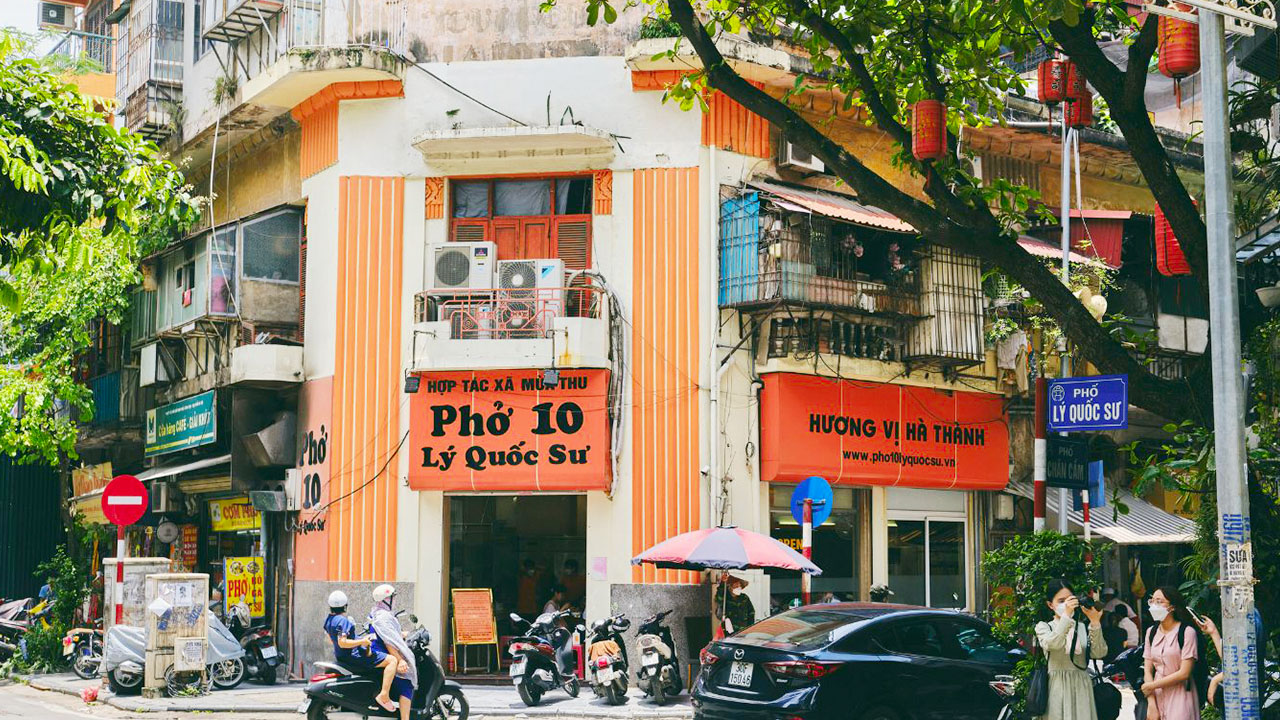
As one wanders along this 250-meter long street, the juxtaposition between age-old spirituality and contemporary urban life becomes apparent. From the well-preserved Ly Quoc Su Pagoda a serene refuge with a history that dates back to the 11th century to the modern eateries and shops that line the street, Ly Quoc Su encapsulates the spirit of Hanoi.
The eclectic mix of local delicacies like chao trai (oyster porridge) and banh trang tron (mixed rice paper) invites both culinary enthusiasts and culture vultures to indulge in authentic experiences. With every step, one becomes immersed in the rhythm of daily life, where the laughter of children blends harmoniously with the clinking of bowls and the bustling chatter of Hanoians. This cultural gem, with its multifaceted charm, is undoubtedly a must-visit for anyone exploring the capital of Vietnam.
Historical Background
Origin of Ly Quoc Su Street
The origin of Ly Quoc Su Street can be traced back to the era of the Ly Dynasty (11th to 12th centuries). The name translates to “The teacher of the court under the Ly Dynasty,” honoring the legacy of Nguyen Chi Thanh, a revered Buddhist monk from Diem Xa village, Ninh Binh province. His esteemed history holds a vital role in the street’s identity; in 1136, he famously cured King Ly Thanh Tong of a grave illness. As a token of gratitude, the King rewarded Nguyen Chi Thanh with a residential area close to Bao Thien Pagoda, which is now identified as Ly Quoc Su Pagoda.
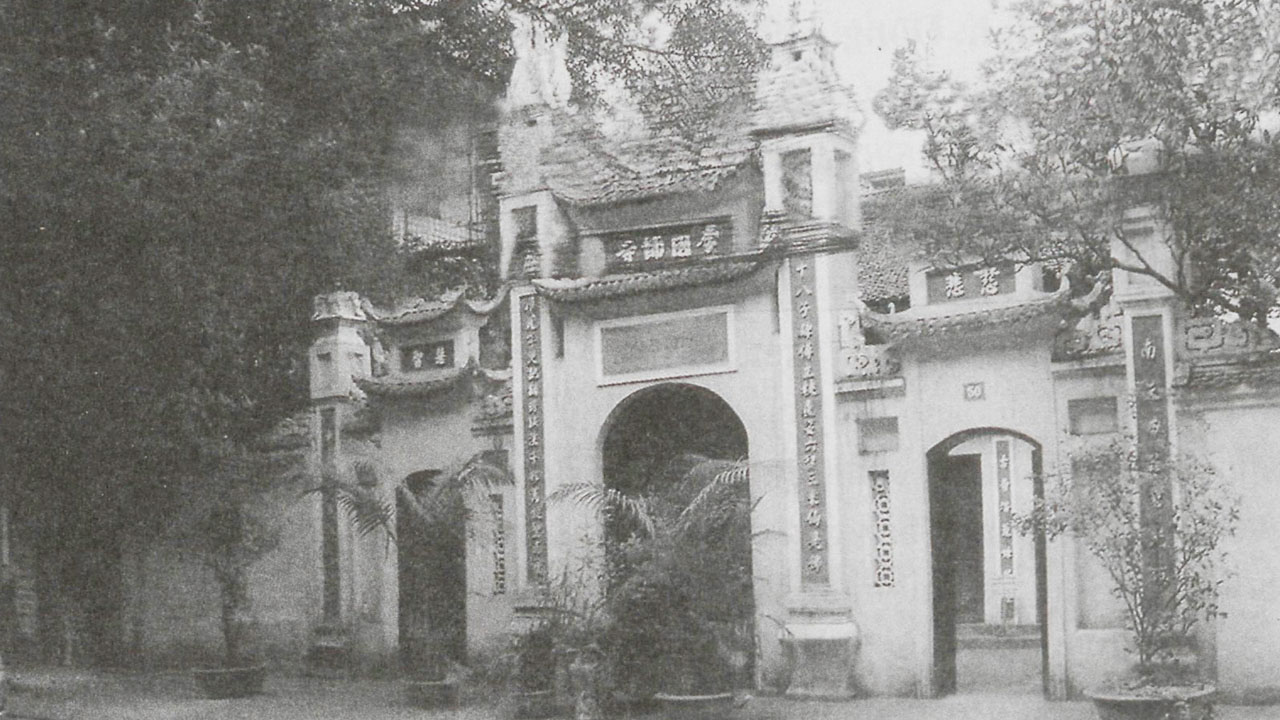
Ly Quoc Su Pagoda, built in 1131, remains one of the oldest religious sites in Hanoi. Over the centuries, it has evolved from a solitary monument of worship into a focal point of cultural significance that attracts both worshippers and historians. The story of Nguyen Chi Thanh is woven into the very fabric of this street a narrative filled with compassion, healing, and respect for wisdom. The pagoda stands today not just as a relic of the past but also as a living reminder of the values championed by the monk, prompting countless visitors to seek enlightenment and peace within its walls.
Connecting the past and the present, Ly Quoc Su Street continues to draw its identity from these deep-rooted traditions. Over time, the street has witnessed the shifts of history from being part of Tien Thi Village in the Tho Xuong District to its rise as a prominent thoroughfare in Hanoi’s old quarter. Visitors are often struck by the spiritual ambiance that remains, complemented by the inviting warmth of local eateries offering delicious street food and the hum of life that ebbs and flows along its length.
Transformation Through Time
The transformation of Ly Quoc Su Street over the years is a fascinating narrative of evolution. In its early origins during the Ly Dynasty, the street served primarily as a passage to the Ly Quoc Su Pagoda and the royal areas surrounding it. The architecture and design reflect the era’s dedication to spirituality, with intricate details evoking a sense of divine serenity. Fast forward to the French colonial period, when the street was known as “Rue Lamblo.” Influences from this time can still be observed in the architecture, with some structures retaining a distinct European flair amidst their traditional Vietnamese counterparts.
As Hanoi modernized, the street transformed into a bustling commercial hub. By the late 20th century, Ly Quoc Su Street began to emerge as a popular destination for both locals and tourists. The rise of restaurants, shops, and street vendors has given the street a new life, where the aroma of grilled foods, the chatter of locals, and the laughter of children create a vibrant atmosphere. Today, the once-pedestrian-focused path has developed into a lively intersection of food enthusiasts, bargain hunters, and culture aficionados.
Despite these changes, Ly Quoc Su Street has managed to retain its essence and charm. The balance between old and new is palpable, as the street bears witness to both the pace of modern life and the tranquility of ancient traditions. The presence of the Ly Quoc Su Pagoda remains vital, serving as a spiritual anchor in the ever-evolving landscape. Thus, Ly Quoc Su is not merely a street; it is a living historical document that narrates the journey of a city, truly capturing the soul of Hanoi.
Significance of the Name
The name of Ly Quoc Su Street carries profound significance, encapsulating the reverent history and cultural heritage attached to it. Translating to “The teacher of the court under the Ly Dynasty,” the title reflects both respect and prominence attributed to Nguyen Chi Thanh, the monk whose legacy continues to influence the area. This name connects the location to the era’s values wisdom, benevolence, and enlightenment which resonate through the story of Nguyen Chi Thanh as a healer and educator.
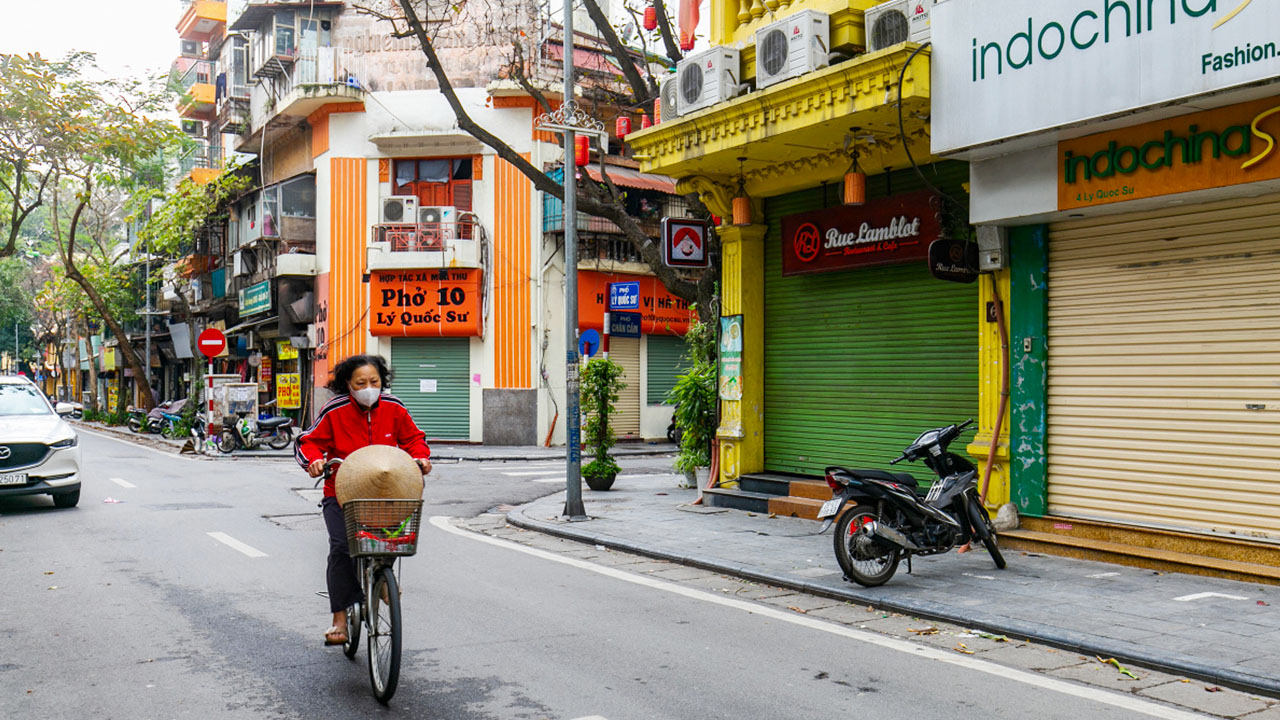
Historically, the inclusion of “Quoc Su” in the street’s name reveals the deep-seated respect for spiritual leaders in Vietnamese culture. These figures were often pivotal in shaping the societal norms and values of their times, acting as ambassadors of both education and compassion. The epithet bestowed upon Nguyen Chi Thanh underlines the essential role of teachers and monks in fostering moral and spiritual growth within the community.
In contemporary times, Ly Quoc Su Street has become a symbol of cultural pride for locals. Many residents express a sense of belonging and ownership over the identities represented by the street an identity that blends historical reverence with a modern vibrancy characterized by local businesses and communal gatherings. This dual identity invites visitors to engage not just with the sights and tastes of Hanoi but also with the deeper narratives that underpin every corner.
Through its name, Ly Quoc Su Street serves as a reminder that history is not merely a record of dates and events but a living dialogue between the past and present. It urges modern-day Hanoians and visitors alike to recognize and appreciate the enduring wisdom of cultural legacy, fostering a sense of community and interconnectedness that enhances the experience of exploring this charming thoroughfare.
Modern Day Attractions
Local Cuisine and Dining Options
In the heart of Ly Quoc Su Street lies a culinary landscape teeming with authenticity and flavor. The street is heralded for its remarkable local cuisine, making it a must-visit destination for food enthusiasts and curious travelers alike. Vendors and restaurants along this vibrant stretch offer a variety of traditional dishes, each telling its own story and bursting with the rich flavors of Vietnam.

One cannot visit Ly Quoc Su without indulging in the iconic pho. Renowned as one of Hanoi’s great pleasures, this soup is characterized by a fragrant broth crafted from slow-simmered bones, coupled with tender slices of meat and delicate rice noodles. The artistry of creating the perfect pho is evident as chefs masterfully balance spices, freshness, and textures to evoke that delicious, homestyle comfort.
Yet pho is just the beginning. Local specialties such as chao trai (oyster porridge), with its creamy consistency and fresh seafood, and banh trang tron (mixed rice paper), a delightful blend of textures and flavors, can be easily found in small eatery-style establishments. Each dish reflects the spirit of Vietnamese cooking simple, yet exquisite, requiring skillful hands and fresh ingredients to stand out.
Dining options are diverse, showcasing both street food stalls and sit-down restaurants that cater to every palate. Visitors will find bustling sidewalk eateries where locals gather over steaming bowls, as well as more contemporary venues that offer a mix of traditional and modern flair. Encouraging communal dining, the environment fosters connections not just with the food but also among diners who share experiences over a hot meal.
Ly Quoc Su Street embodies a culinary adventure awaiting enthusiastic foodies, as it invites individuals to explore the various textures, flavors, and culinary history of Hanoi. The prospects of tasting distinct dishes, while relishing the street’s lively ambiance, elevate the experience from mere dining to a cherished memory.
Shopping and Souvenir Opportunities
As one strolls down Ly Quoc Su Street, the opportunities for shopping and discovering unique souvenirs become immediately evident. The street brims with life, framed by a blend of small shops, local stalls, and bustling markets, drawing in tourists and locals alike searching for authentic mementos of their experience in Hanoi.
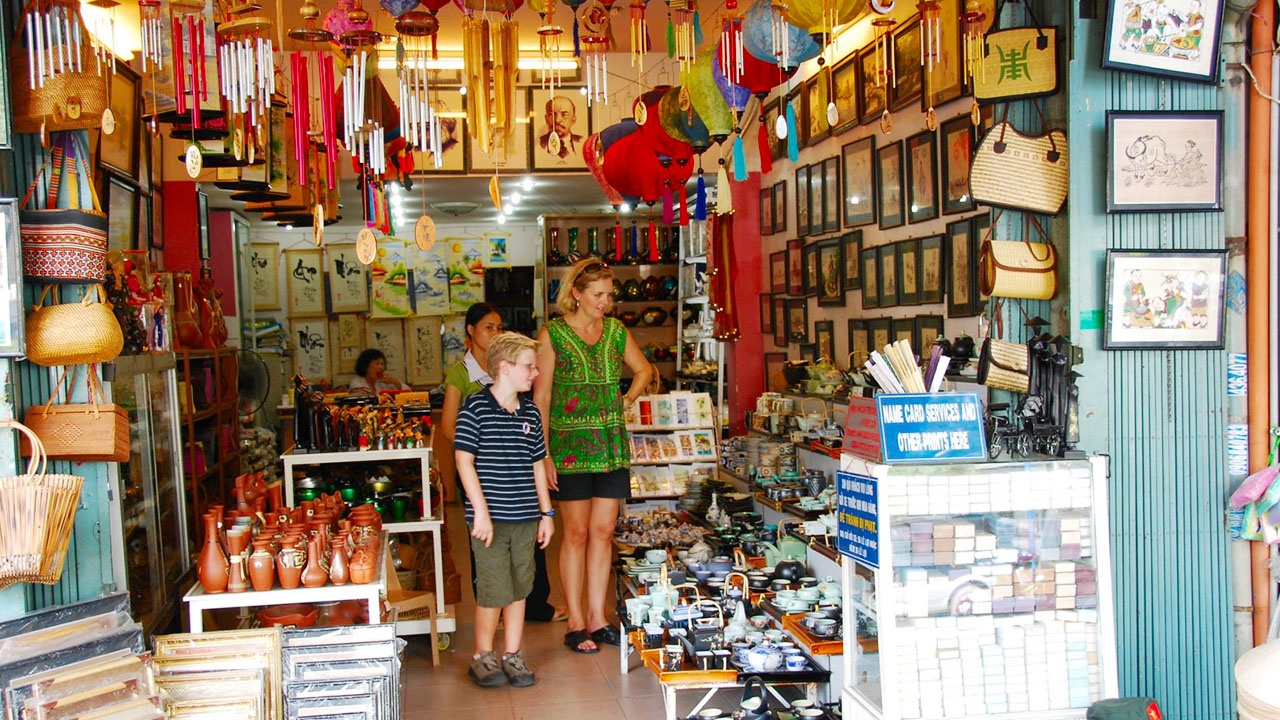
Among the most poignant offerings are the exquisite handicrafts. Vietnam is celebrated for its beautifully crafted items, and Ly Quoc Su is no exception. Here, you will discover delicate lacquerware, intricately designed handmade lanterns, and stunning hand-embroidered textiles that reflect the craftsmanship embedded in local culture. Shops specializing in these artisanal products make it easy to find a memorable gift, allowing visitors to take a piece of Vietnam home with them.
Another highlight for shoppers is the opportunity to purchase traditional clothing. Whether it’s the iconic Ao Dai, recognized as the quintessential attire for Vietnamese women, or high-quality silk products, the options abound. The nearby Hang Gai Street, famous for its silk shops and tailors, ensures that visitors can embrace the local sartorial culture.
The search for unique culinary items can be fulfilled as well. Vietnamese coffee, with its flavor that encapsulates the rich agricultural heritage of the region, is a sought-after item. Add to this aromatic green tea and flavorful local snacks such as green bean cakes, and the shopping experience transcends the traditional to become a flavorful exploration of Vietnam’s diverse tastes.
Finally, those drawn to the allure of jewelry will find an array of beautiful pieces ranging from handcrafted items to semi-precious gemstones within the local shops a perfect reminder of a vibrant culture rich in history. Through shopping along Ly Quoc Su Street, visitors connect with the local lifestyle and bolster the community’s artisan manufacturers a testament to the intertwined relationship between culture and commerce.
Key Cultural Sites
Ly Quoc Su Street is rich with key cultural sites, serving as a hub for anyone seeking to understand the historical and spiritual tapestry that is Hanoi. Among these, the Ly Quoc Su Pagoda holds pride of place, with its near-900-year history as a vital spiritual center in the city. The pagoda is not only an architectural marvel with serene landscapes but also a place where locals go to pay their respects, reflecting the historic and spiritual significance imbued in this locale.
In addition to the pagoda, the street’s proximity to Hanoi’s Old Quarter enhances its cultural appeal. Known for its narrow alleys and traditional wooden buildings, this historic district presents an immersive experience into the daily life of Hanoians. Wandering through the Old Quarter brings forth a delightful juxtaposition of history against the backdrop of an ever-evolving urban setting.
The Cultural Exhibition Center for Vietnamese Art and Culture is another significant site, frequently showcasing local art in various forms, from paintings and sculptures to performance arts. These exhibitions often celebrate the traditional arts while intertwining contemporary expressions, drawing visitors into the dynamic evolution of Vietnamese culture.
Moreover, Ly Quoc Su Street occasionally hosts cultural festivals and community events, echoing the street’s spirit of connectivity and interaction. These celebrations highlight traditional Vietnamese music, dance, and local crafts, allowing visitors to engage with the community and witness the vibrant cultural scene firsthand.
In essence, Ly Quoc Su Street is not just a physical space; it is a living museum that reflects the values, beliefs, and traditions of the Vietnamese people. The key cultural sites within and around the street offer visitors a profound understanding of Hanoi’s rich heritage, enveloping them in the vibrant pulse of the city.
Events and Festivals
Annual Cultural Festivals
The cultural richness of Ly Quoc Su Street is profoundly enhanced by the annual festivals that grace this vibrant thoroughfare. These events breathe life into the historical backdrop of the street, drawing in both locals and tourists who wish to celebrate the myriad traditions of Vietnam. Among the most significant is the Tet Nguyen Dan, or Lunar New Year, which marks the most important celebration in Vietnamese culture. This festival encapsulates an array of traditions from family gatherings to festive gatherings, with the street adorned with colorful decorations and joyful festivities.
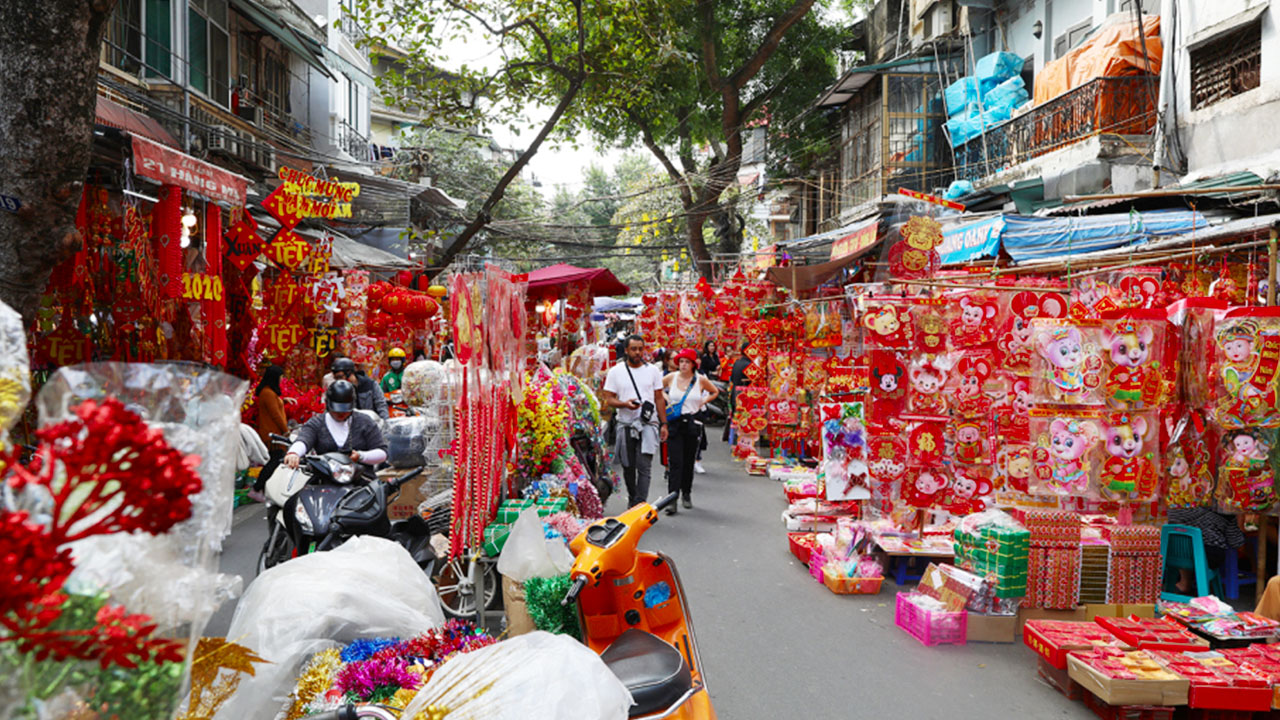
In addition, the Hung King Temple Festival in Phu Tho province is significant as it commemorates the legendary Hung Kings, the founders of the nation. Throughout the festival, folk games and cultural performances come to life, showcasing the values of unity and national pride that are inherent to the Vietnamese people.
The Giong Festival also shines brightly in the cultural calendar, held in Hanoi to honor Saint Giong, an immortal hero in Vietnamese folklore. The ceremonies, parades, and traditional singing elevate the vibrancy of the event, resonating with the spirit of the community as they come together to convey their cultural heritage and collective memory.
Ly Quoc Su Street embodies an ever-evolving celebration of cultural continuity, creating a unique backdrop where these festivals flourish and invite collective participation. They offer visitors a rare opportunity to immerse themselves in these rich traditions, bridging the gap between the past and the present.
Local Music and Art Shows
Local music and art shows fill Ly Quoc Su Street with an infectious vibrant energy, creating thrilling moments for both locals and visitors. These showcases present an eclectic range of performances, from traditional Vietnam folk music to contemporary artistic expressions. Music, in particular, serves as a powerful medium for storytelling and evokes strong emotional connections, often rekindling the rich cultural identity and heritage of the Vietnamese people.
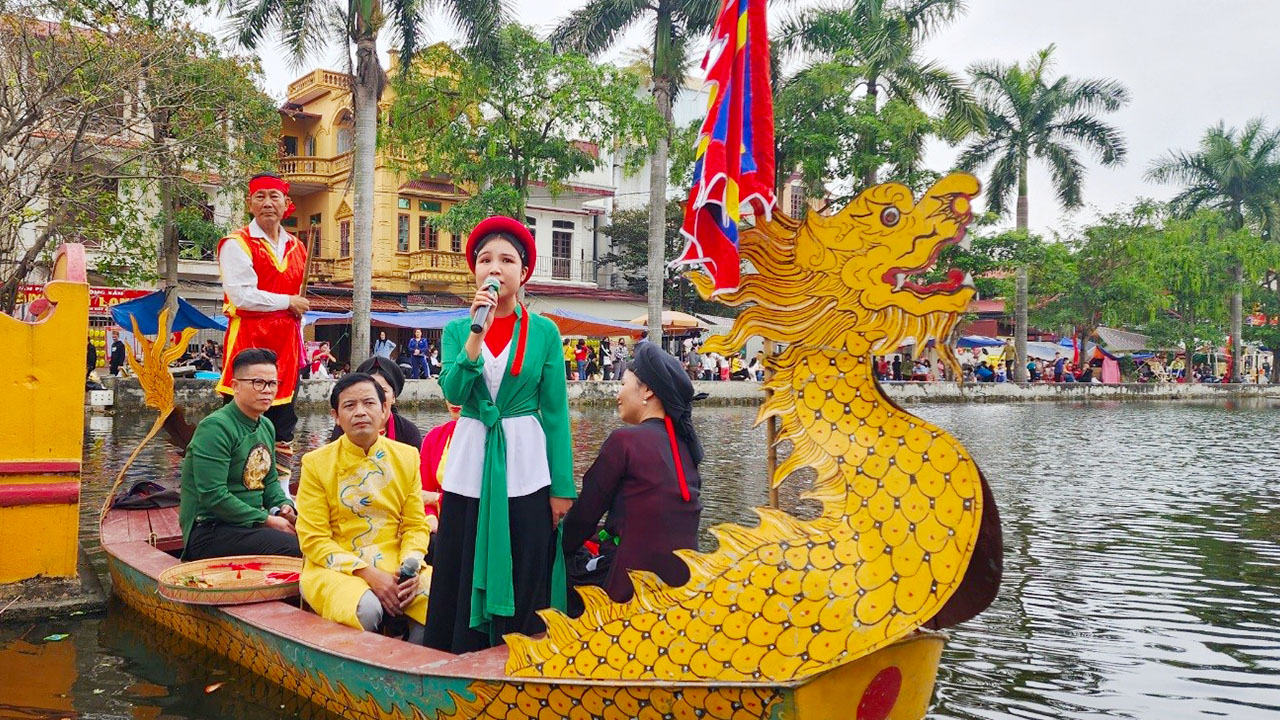
The Lim Festival, celebrated in Bac Ninh province, showcases the UNESCO-protected Quan Ho folk singing tradition. The singers share heartfelt stories, infusing the performances with immense cultural significance. Events like these often resonate with visitors who long to understand the essence of Vietnamese tradition and artistry.
The Kate Festival, celebrated by the Cham people in Southern Vietnam, similarly highlights unique Cham music and dance styles. These regional performances offer a glimpse into the diverse cultural fabric that characterizes Vietnam.
Moreover, local music and art shows often transpire along the streets; impromptu performances by talented musicians and artists create a dynamic and lively atmosphere. In addition to art exhibitions held in various spaces, visitors can bask in the creativity of local artisans showcasing their work, bridging a connection to the artistic lineage of Vietnam.
Through the medium of music and the arts, Ly Quoc Su Street allows for expressions of identity that transcend language barriers, creating moments of solidarity, joy, and cultural appreciation. These vibrant performances transform the street into a pulsating heart where art becomes interlinked with daily life, inviting a sense of community and connection among its participants.
Night Markets and Street Performances
As night falls, Ly Quoc Su Street transforms into a bustling night market filled with aromas, colors, and sounds, creating an enchanting atmosphere that captivates patrons searching for unique experiences. The night market offers a vibrant array of street foods, with vendors serving everything from sizzling grilled meats to freshly fried snacks, enticing passersby and promising an authentic culinary adventure.
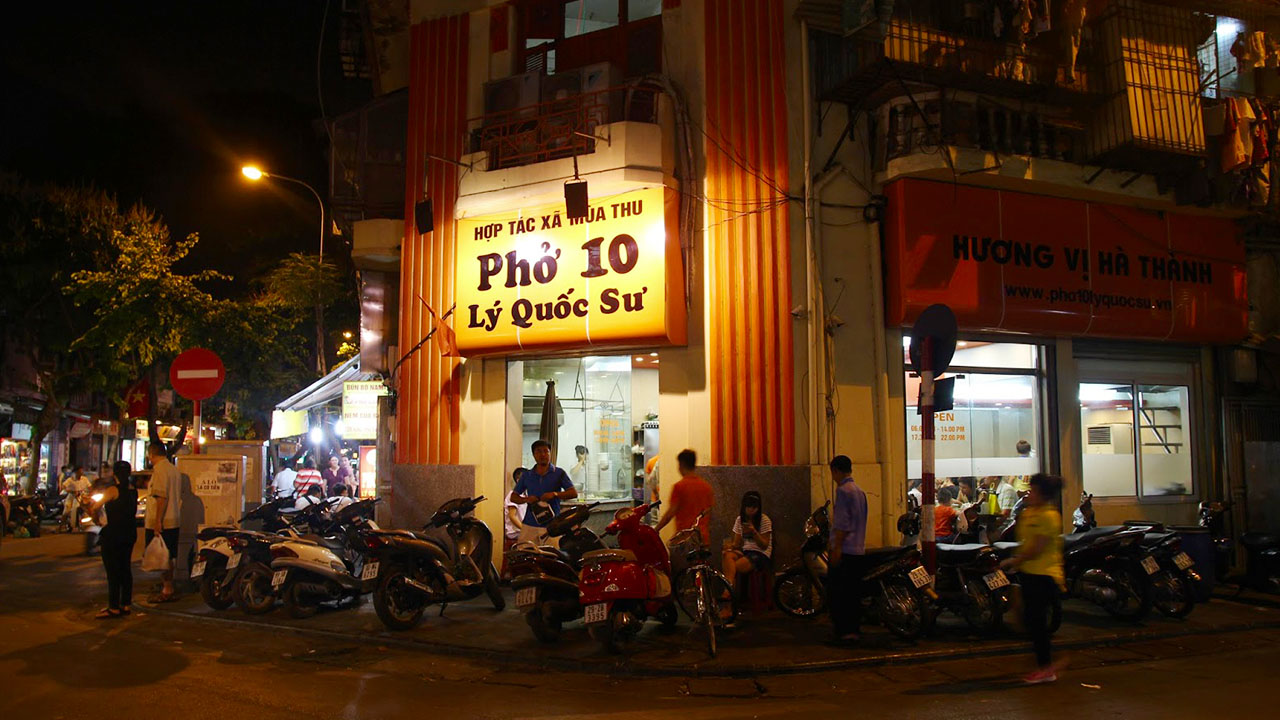
The allure of the night market extends beyond food; it encapsulates the spirit of Hanoi the people, their traditions, and their products. One can find stalls filled with handicrafts, local souvenirs, and handmade goods that reflect the craftsmanship inherent in local culture. These markets serve as a hub for community interaction, where locals and visitors mingle, share stories, and revel in the warmth of hospitality that characterizes Vietnamese culture.
Street performers, too, bring the night to life with captivating shows ranging from traditional folk music performances to mesmerizing dance routines. The energy is palpable as crowds gather to watch, illustrating the dynamic interplay between performer and audience a celebration of life unfolding right before one’s eyes.
The Ly Quoc Su Street Night Market stands as a testament to the resilience of tradition in an urban environment. It provides a space where the past meets the modern, and where food, art, and culture converge seamlessly to create an unforgettable experience.
Each visit not only satisfies the senses but also strengthens the community’s fabric, as everyone comes together, however briefly, under the soft glow of streetlights and the shared joy of exploring this rich cultural landscape.
Travel Tips
Best Time to Visit
The ideal time to visit Ly Quoc Su Street and explore Hanoi is during the cooler months, from late autumn to early spring (November to April). During this period, temperatures are pleasantly brisk, ranging from 15°C to 20°C (59°F to 68°F), making it enjoyable for outdoor exploration and bustling street activities which define this lively district.
Visiting during Tet (Lunar New Year) can also offer fascinating insights into Vietnamese culture, as the festivities see the street adorned with colorful decorations and a variety of food stalls springing up. However, one should be prepared for larger crowds and potentially higher prices for accommodations and dining during this peak tourist season.
If you prefer a quieter experience, consider visiting in the months just before or after the Tet holiday. This timeframe captures all the vibrant activity of Hanoi without the throngs of tourists, allowing for a more authentic exploration of local life and culture.
Regardless of the season, it is wise to keep an eye on weather forecasts, as Hanoi experiences some rain even in the drier months. Travelers should check regional festivals and events calendars, as they often provide enriching opportunities to engage with local culture.
Transportation Options
Navigating Ly Quoc Su Street and the greater Hanoi area can be both exciting and straightforward for visitors. While the street itself is pedestrian-friendly, various transportation options ensure seamless connections to and from other parts of the city.
Walking is often the best way to progress along Ly Quoc Su Street, as it provides an immersive experience, allowing individuals to absorb the vibrant sights and sounds of the area. Exploring on foot allows for spontaneous discoveries of local eateries, shops, and art installations that one might overlook when traveling by vehicle.
For more extensive journeys within Hanoi, bicycles and motorbikes are available for rent and can be found at multiple locations throughout the city. Biking through Hanoi’s streets provides a unique perspective and the thrill of feeling integrated into the hustle and bustle of city life.
Ride-hailing services such as Grab are widely used throughout Hanoi, offering convenient ride options for tourists unfamiliar with the city. They provide access to various transportation modes, including cars and motorbikes, and are particularly useful when visiting areas outside of the Old Quarter.
Additionally, public buses dot the city, and while they are more difficult for tourists to navigate due to language barriers, they are an economical choice for those seeking the local experience. However, visitors should be prepared for crowding during peak hours.
In essence, whether you choose to walk, rent a bike, or utilize ride-hailing services, accessing and enjoying Ly Quoc Su Street remains simple and efficient. Each mode of transportation presents an opportunity to engage more deeply with Hanoi’s life as it unfolds before your eyes.
Must-Try Local Delicacies
No exploration of Ly Quoc Su Street would be complete without relishing its celebrated local delicacies. The street offers an enticing array of dishes that capture the unique flavors and culinary heritage of Hanoi, each one begging to be sampled by visitors eager to indulge in the vibrant Vietnamese food scene.
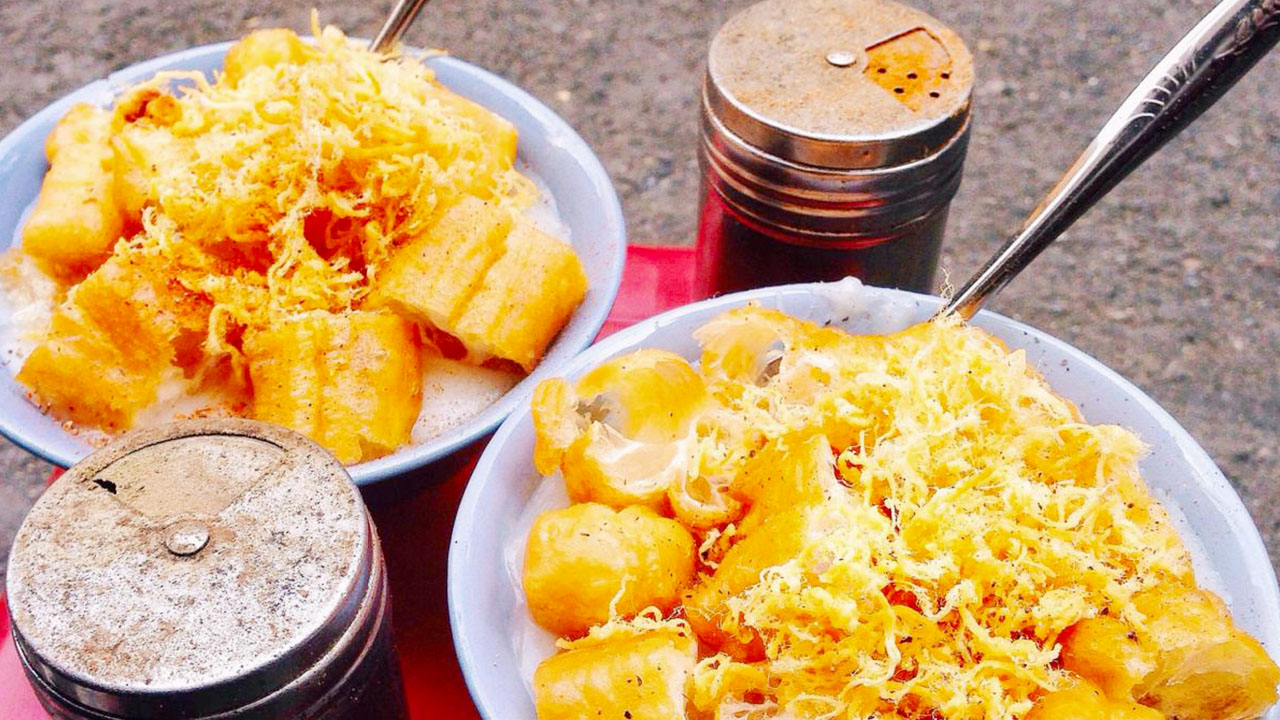
Beginning with the city’s most iconic dish, pho takes center stage. The sweet, rich broth, simmered from bones and topped with herbs, offers a comforting experience that transcends borders. Here, visitors can find various regional adaptations in small stalls, each chef imparting their creative flair to this cherished staple.
Equally delightful is chao trai, a warm oyster porridge that provides both comfort and nourishment. The dish often showcases fresh oysters, wonderfully blended into a creamy base, and serves as a perfect choice for any meal be it breakfast or a late-night snack.
For those with a penchant for experimentation, banh trang tron, or mixed rice paper, presents a light but flavorful option. This popular street snack combines thinly sliced rice paper with fresh vegetables, flavorful sauces, and crispy toppings, resulting in an enjoyable explosion of textures.
Another notable mention is banh goi, or pillow cakes, which feature a golden, crispy exterior enclosing a savory filling perfect for those looking for a quick but satisfying bite. These popular treats can be found at numerous stalls lining the street, beckoning both tourists and locals alike.
Lastly, the refreshing taste of Vietnamese lemon tea adds a citrusy element to the local cuisine. This popular beverage is often enjoyed during warmer months, offering a cool respite while mingling with friends or simply rejuvenating after a busy day exploring.
Ly Quoc Su Street is a culinary haven, brimming with unforgettable flavors and local favorites that invite visitors to explore the heart of Vietnamese cuisine. From warming soups to crispy delights, each dish tells a story one of history, culture, and the unity found through shared meals.
Community and Interactions
Engaging with Local Residents
The quaint charm of Ly Quoc Su Street is complemented significantly by the interactions one can experience with the local residents. Engaging with locals offers an authentic insight into the daily rhythm of life in this vibrant corner of Hanoi, creating connections that transcend language barriers and cultural divides.
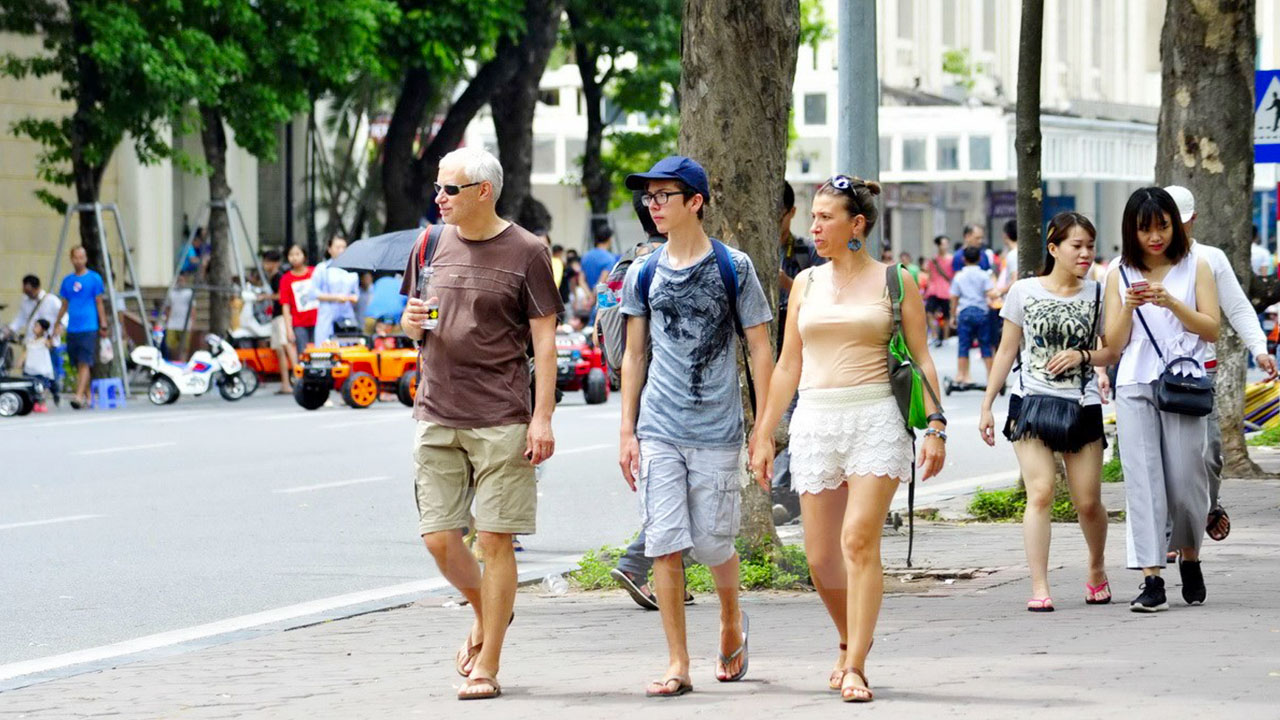
Street vendors and shopkeepers are often warm and welcoming, eager to share their stories, insights, and culinary expertise with visitors. This sense of openness invites tourists to ask questions about local dishes, traditions, and the significance of the street itself providing a wealth of knowledge that enriches the visitor experience.
Simply strolling along the street provides ample opportunities for spontaneous conversations, whether with fellow diners sharing their meals or with locals curious about the travelers wandering through their neighborhoods. These interactions allow for cultural exchange, where visitors can learn about Vietnamese customs, societal norms, and even art forms that may not be typically encountered in a standard tourist itinerary.
Participating in local events or workshops can further enhance these engagements. Cooking classes or art sessions offered by artisans enable tourists to immerse themselves into the community while learning from skilled practitioners. These hands-on experiences cultivate relationships that foster understanding and appreciation of the local culture.
Through the vibrant tapestry of human interactions on Ly Quoc Su Street, the community reveals its heart and soul. Each genuine exchange contributes to a deeper understanding of the intricate layers that define this culturally rich neighborhood.
Art and Craftsmanship
Art and craftsmanship form the backbone of the cultural identity associated with Ly Quoc Su Street. The legacy of Nguyen Chi Thanh, whose expertise in bronze casting shaped both the street’s and Vietnam’s artistic heritage, still resonates through the artisanal practices evident in the area today.
Local shops often showcase beautifully crafted items, from decorative handicrafts to unique pieces of functional art that embody cultural heritage. Visitors will appreciate the intricate designs and techniques passed down through generations, offering a glimpse into the dedication and skill of local artisans who continue to uphold these traditions.
The legacy of bronze casting remains significant, with artists specializing in metalwork creating stunning statues and decorative items that pay homage to their ancestral roots. Notably, numerous pagodas across the country still celebrate both Buddha and Ly Quoc Su, reflecting the enduring importance of craftsmanship tied to spiritual practice.
Beyond the handicrafts, the street also serves as a canvas for contemporary artists, bridging traditional forms with modern influences. Visitors can find murals, street art, and pop-up exhibitions that reflect the dynamic nature of the Vietnamese art scene. These showcases display the innovative spirit of young artists eager to challenge conventions while celebrating their cultural heritage.
Engaging with the local art community provides a profound experience that transcends simply purchasing items; it allows visitors to recognize the interconnectedness between culture, identity, and creativity. Ly Quoc Su Street stands as a celebration of artistic expression, where tradition harmoniously intertwines with the modern world, inviting individuals to reflect on the layers of meaning inherent in craftsmanship.
Visitor Experiences and Testimonials
Visitor experiences on Ly Quoc Su Street paint a vivid picture of the vibrant atmosphere and the unique moments that await those who explore its depths. Many travelers recount tales of serendipitous encounters with local residents, spanning heartwarming exchanges with vendors who graciously shared not only their finest culinary creations but also stories of their lives and shared cultural heritage.
One traveler fondly remembers stumbling upon a food stall selling banh trang tron: “It was like a magical moment. The vendor, with his infectious smile, engaged me in conversation while preparing my order. He explained the ingredients, the history, and even suggested I pair it with lemon tea I left not only with delicious food but with a newfound connection to Vietnamese culture.”
Visitors are often struck not only by the culinary delights but also by the overall ambiance of the street, describing it as a vibrant mosaic that reflects the heartbeat of Hanoi. Another traveler shared, “Walking through Ly Quoc Su Street during the evening, the energy was infectious. Street performances, laughter, and the smell of grilled food enveloped me, perfectly capturing the essence of what makes Hanoi so special.”
Numerous testimonials speak to the importance of community relationships fostered during their visits, creating profound memories that last well beyond their trip. “I was fortunate enough to attend a local cooking class, where the warmth and hospitality of the instructor made me feel like part of the family. This street not only taught me how to cook like a local, but it also instilled a sense of belonging I never expected,” said another visitor.
Ultimately, the vivid tapestry of experiences woven through Ly Quoc Su Street resonates with anyone who steps foot on its bustling sidewalks. Each visit, interaction, and dish savored contributes to a larger narrative and creates connections that span borders and cultures, making the spirit of Hanoi live on in the hearts of its visitors.
Conclusion
Ly Quoc Su Street is far more than a simple thoroughfare in Hanoi; it is a dynamic cultural gem that encapsulates the essence of Vietnamese history, cuisine, and community. Its rich past, characterized by centuries of transformation and resilience, continues to breathe life into the present. From exploring the calming atmosphere of Ly Quoc Su Pagoda to savoring the delectable array of local dishes, visitors find themselves entwined with the timeless stories that unfold on its bustling sidewalks.
As street vendors serve their culinary masterpieces and artisans showcase their artistry, the heartbeat of the street becomes evident a celebration of tradition, interaction, and cultural exchange. Each visitor is welcomed not just as an observer but as a participant in the ongoing tapestry of life on Ly Quoc Su Street. Through moments of shared laughter, delicious food, and meaningful connections, this enchanted avenue transforms into a vivid portrait of Hanoi’s identity, leaving indelible marks on those fortunate enough to wander its pathways.
Indeed, Ly Quoc Su Street is a testament to the vibrant spirit of Hanoi, and for travelers, it stands as an invitation to step into a world where history and modernity blend seamlessly a place that beckons to be explored and cherished, one memory at a time.


